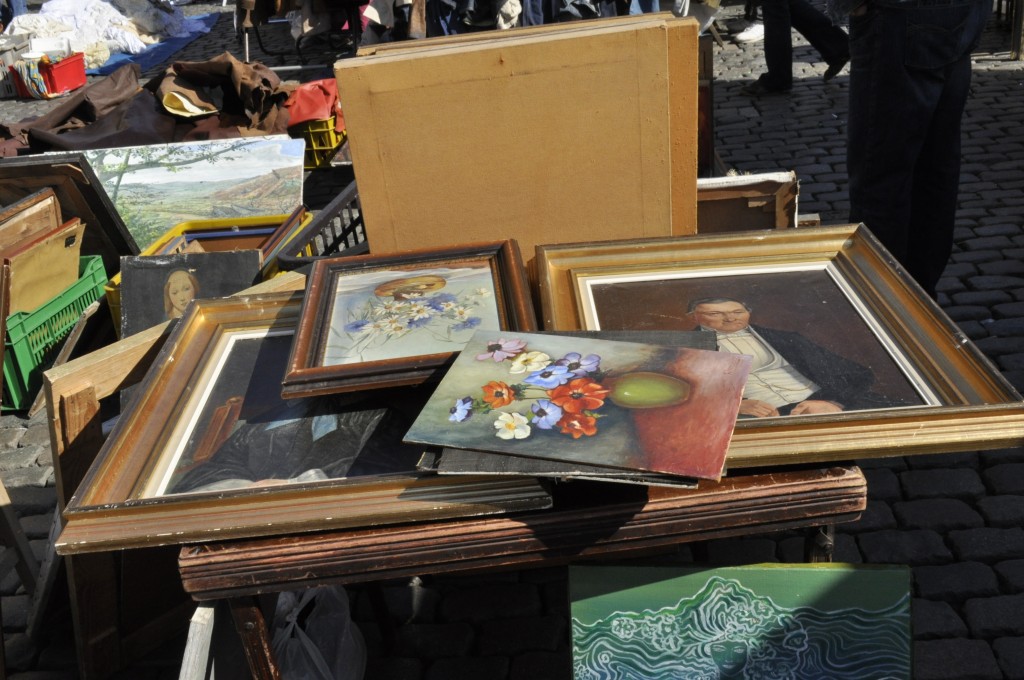How to Hang Artwork in Your Home
Artwork, like paintings, photos and posters are one of several budget-friendly options for decorating your home. You can find affordable artwork at local galleries, flea markets, museum shops, and even regular department stores. If you are artistically inclined, you can even make your own artwork to liven up the walls in your home.
When it comes to putting artwork in your home, choosing the artwork is generally the easy part. Unless it’s something really tacky, almost anything you choose will work well on your walls. And if your taste leans more toward kitsch, then anything goes.
However, once you pick the art, you then have the difficult task of actually displaying it in your home, and here is where things can get tricky. Hanging artwork is more than just pounding a nail and slapping the art up on the wall, it actually takes a little planning.
Consider Scale
Think about the length and the size of the wall. For example, if you have a 20’ x 10’ living room, and you have a blank wall that spans the length of the room, you will want to consider hanging larger pieces in that space, such as a two or three floor-to-ceiling panels, or several portraits in a row.
A painting that’s too small for the wall will have a lot of negative space around it, which will make it look awkward and out of place. The vast expanse of wall will also distract from the artwork.
Conversely, putting too large a piece in a small space – such as a large panel on a wall adjacent to a staircase, can make the area appear cramped, and also distracts from the artwork.
Remember Lighting
The proper lighting is very important, even for the less expensive paintings. Lighting that is too bright or too dim can wash out color and detail. For example, when the painter Georges Seurat was finally able to display his paintings, the gallery put them in a dim room and as a result, all of the marvelous detail in his unique paintings was lost.
You also want to make sure the light is positioned properly so that there’s no glare, which can also washout out detail.
Many galleries use classic picture lights, which illuminate the artwork with soft light. The light is just bright enough to bring out the rich detail in the image, but not so bright as to overshadow the work.
The type of light you use is just as important as the placement and intensity. Incandescent lights tend to have an orange glow that brings out the yellow and red tones in many pieces. Halogen lights have a pure white glow, and are considered best for displaying art. However, they can also burn really hot, which means they can damage the artwork if they aren’t placed properly. Fluorescent lights toed to have a greenish cast and are considered really bad for lighting artwork. Not only does the glow of the fluorescent bulb distort the color but, because they have high levels of UV radiation, they can also cause the pigments in the artwork to fade.
Consider the Height
The rule of thumb is to always hang artwork at 57” on center. That means that the center of the piece should be 57” from the ground, which is considered the average height of the human eye. Now, keep in mind that this rule is not set in stone, and that there could be several reasons why you might hang a painting higher or lower.
For example, if you are hanging a group of images of different shapes and sizes together in a grid, then obviously all of those pieces are not going to be 57” on center. However, when it comes to grouped images, you should treat it as one big image, and make sure that the center images are 57” on center, with the outer images spaced around them.
If you happen to be taller or shorter than average, you might feel more comfortable putting the images at your eye level. While you are certainly free to do that, one of the issues is that the images will then look off kilter to people of average height. On the other hand, tweaking the height could actually enhance certain pieces.
However, if you plan to entertain often, or use your home as a showplace, then following the 57” rule is the best way to go because it creates the most harmonious look.
Look at the Background Colors
When choosing a place to hang you artwork, you should consider the color of the wall that it will be hanging on. The wall provides a backdrop for the artwork and can the color of the walls can actually have some effect on the artwork. For example, a painting with a lot of reds and yellows might clash with light blue walls, but could pop against terra cotta wall. Dark walls could cause dark paintings to disappear, whereas stark white walls could wash out pastels.
If the color of the wall clashes with the painting, you might consider repainting that wall, or hanging a cloth with a complementary color and using that as the background.
Conclusions
As you can see, successfully hanging artwork in your home requires a little more than just a hammer and nails. However, when done properly, the artwork will enhance your home, and your home will enhance the artwork.

















All good tips. I’ve seen artwork hung occasionally, and just scratched my head and said…what?